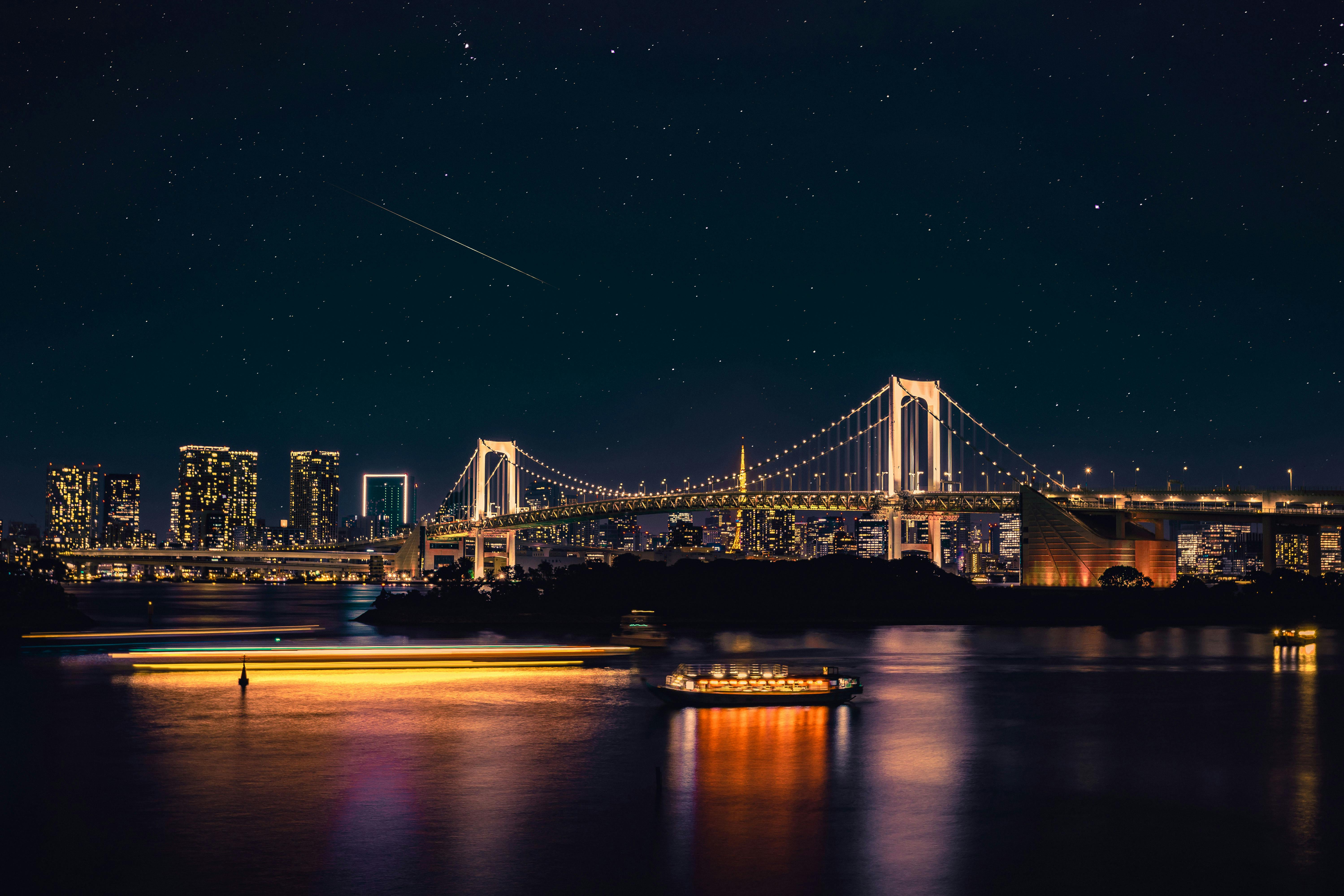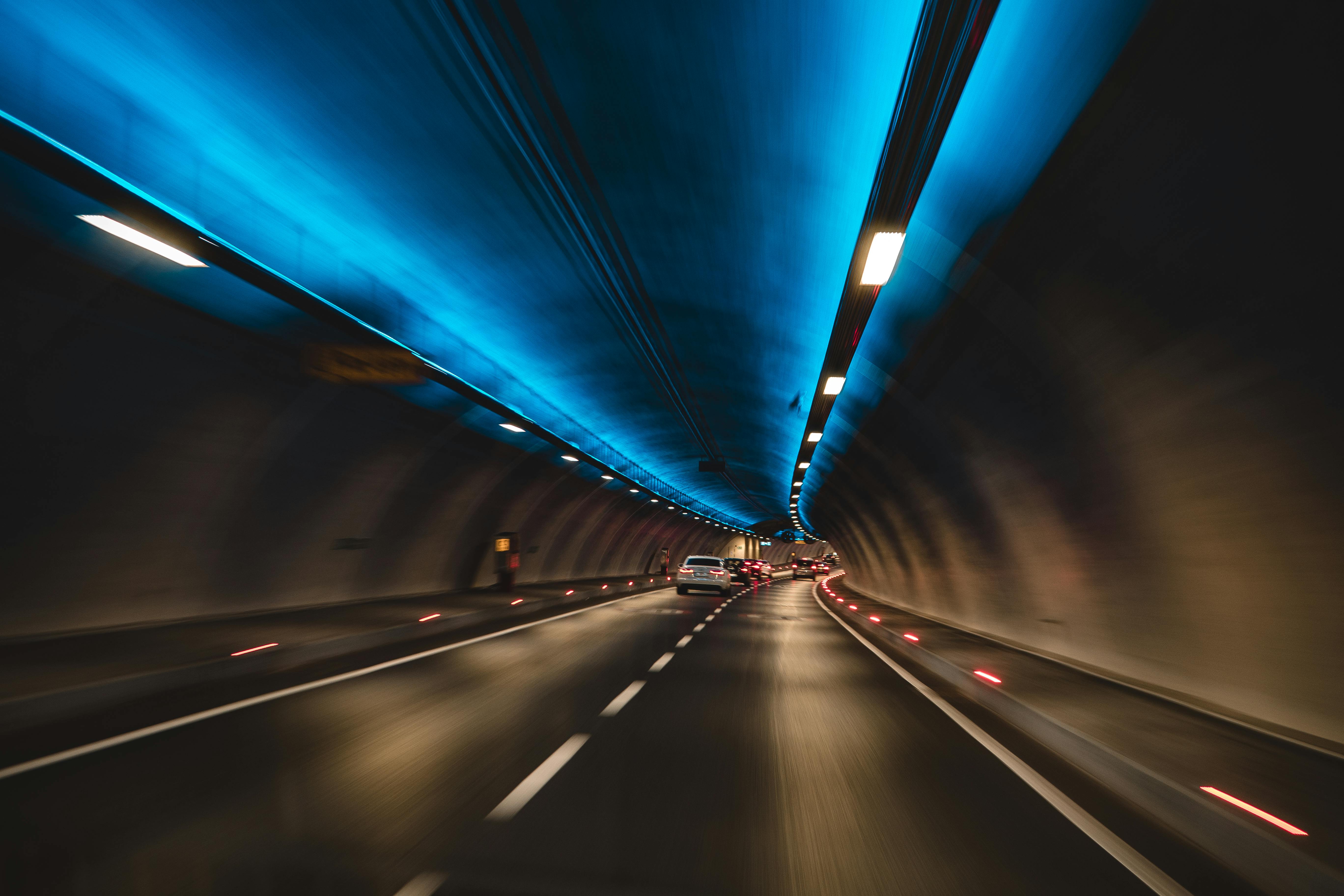Daytime Tokyo rides are about managing the system—traffic, timing, patience. But at night, everything shifts. The lights stay on, but the pace changes. The roads open up. The noise dies down. And suddenly, the city that felt dense and chaotic just hours earlier becomes something else entirely.
It’s one of the best times to ride.
The Ride
Start late. After 10 p.m. is good. Midnight is better. Most cars have cleared out. Delivery vans are done. The commuters are home. The traffic lights still cycle like it’s rush hour, but no one’s waiting at them.
The loop begins somewhere familiar—maybe Shibuya or Roppongi. Still some energy there. Drunks on the corners. Taxis drifting between clubs. But within minutes, the road settles. Down past Tokyo Tower, up along the loop routes, over the Rainbow Bridge. The skyline isn’t just lit—it’s sharp. Crisp outlines against a dark sky, reflected back in the glass of office buildings and the bay.
Then the ride ducks underground. The tunnels at night are something else. Still warm from the day, still echoing, but somehow calmer. Fewer cars. More shadows. The only sound is the engine bouncing back in stereo. It feels like riding through a dream someone else had.
Pop out near Odaiba. The bay’s quiet. The Ferris wheel spins, half-lit. There’s a vending machine glowing by the side of the road and not much else. Maybe loop back through the empty streets of Shinagawa or cut north toward Ueno. There’s no plan. Just movement.
At some point, the city goes silent. Not all at once—but block by block. The neon fades. Crosswalks sit blinking with no one to cross. That’s the pocket most riders aim for. When the city forgets it's awake.
What to Expect
Open Roads - Most expressways are smooth sailing after midnight. Even surface streets are wide open. Perfect for low-stress urban loops.
City Lights - Tokyo’s skyline comes alive at night. Neon signs, glowing billboards, and reflections off the Sumida River create a backdrop that feels straight out of a movie. Riding past Shibuya, Roppongi, or along Rainbow Bridge with the city lit up around you is a uniquely electric experience.
Tunnel Riding - At night, the tunnels feel even more surreal. Fewer cars, darker corners, and stretches where it feels like time slips a little.
Cooler Temps - Even in summer, late-night riding cuts the heat. In winter, it can get cold quickly—especially around the bay—so gear accordingly.
Vending Machines and Konbini - They become lifelines. Not much else is open. A hot can of coffee and a Lawson parking lot becomes the de facto pit stop.
Random Encounters - Other night riders are out there. Small groups. Solos. Sometimes the only other headlights seen on a 10-lane highway at 2 a.m.
Suggested Loop
- Start: Shibuya or Shinjuku – light city traffic, still active
- Head South-ish: Down past Tokyo Tower to Shiba Park and onto the Inner Loop
- Take the Rainbow Bridge: Cross into Odaiba for a clear skyline view
- Bayshore Route: Cruise along Route 357 (湾岸線, Wangan-sen), if traffic's clear
- Return via Expressway or Surface: Cut back up through Shinagawa or along the Sumida River
Total time: 1.5 to 2 hours with stops. Could stretch longer if the flow hits.

Verdict
A Tokyo night ride isn’t really about the destination. It’s about the in-between moments—the empty intersections, the quiet tunnels, the sound of tyres over steel seams in a bridge no one else is crossing. It’s the rare time when one of the world’s busiest cities feels like it belongs just to those out riding it.
No schedule. No traffic. Just space.
Planning a Tour?
Get in touch! Our group Fuji Explorer Tour will start and end in Tokyo, or we have plenty of self-guided tours on offer that depart from Tokyo.


